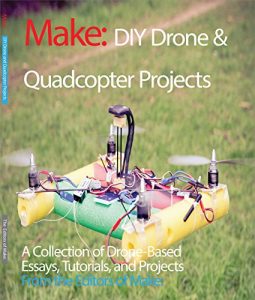I 99eBooks è una directory di eBook. Cerchiamo e classificato intorno alle eBooks Web per te!
Tutti i diritti riservati. I libri e libri elettronici sono di proprietà dei rispettivi proprietari.
NASA’s Space Launch System: Space Exploration for a New Century (English Edition)
The National Aeronautics and Space Administration's (NASA's) Space Launch System (SLS) Program is making progress toward delivering a new capability for human spaceflight and scientific missions beyond Earth orbit. Developed with the goals of safety, affordability, and sustainability in mind, the SLS rocket will launch the Orion Multi-Purpose Crew Vehicle (MPCV), equipment, supplies, and major science missions for exploration and discovery. Making its first uncrewed test flight in 2017 and its first crewed flight in 2021, the SLS will evolve into the most powerful launch vehicle ever flown, capable of supporting human missions into deep space and to Mars. These papers summarize the planned capabilities of the vehicle, the progress the SLS Program has made in the years since the Agency formally announced its architecture in September 2011, and the path the program is following to reach the launch pad in 2017 and then to evolve the 70 metric ton (t) initial lift capability to 130 t lift capability. This book outlines the milestones the program has already reached, from developmental milestones such as the manufacture of the first flight hardware and record-breaking engine testing, to life-cycle milestones such as the vehicle's Preliminary Design Review in the summer of 2013. It also discusses the remaining challenges in both delivering the 70 t vehicle and in evolving its capabilities to the 130 t vehicle, and how the program plans to accomplish these goals. In addition it demonstrates how the Space Launch System is being designed to enable or enhance not only human exploration missions, but robotic scientific missions as well. Because of its unique launch capabilities, SLS will support simplifying spacecraft complexity, provide improved mass margins and radiation mitigation, and reduce mission durations. These capabilities offer attractive advantages for ambitious science missions by reducing infrastructure requirements, cost, and schedule. A traditional baseline approach for a mission to investigate the Jovian system would require a complicated trajectory with several gravity-assist planetary fly-bys to achieve the necessary outbound velocity. The SLS rocket, offering significantly higher C3 energies, can more quickly and effectively take the mission directly to its destination, providing scientific results sooner and at lower operational cost. The SLS rocket will launch payloads of unprecedented mass and volume, such as "monolithic" telescopes and in-space infrastructure, and will revolutionize science mission planning and design for years to come. The SLS is making measurable progress toward becoming a global infrastructure asset for robotic and human scouts of all nations by harnessing business and technological innovations to deliver sustainable solutions for space exploration.
Contents:
NASA’s Space Launch System: An Enabling Capability for Discovery - Stephen D. Creech
NASA’S Space Launch System: An Enabling Capability for Exploration - Dr. Kimberly F. Robinson
NASA’S Space Launch System: One Vehicle, Many Destinations - Todd A. May
NASA’S Space Launch System: Moving Toward the Launch Pad - Stephen D. Creech
Game Changing: NASA’s Space Launch System and Science Mission Design - Stephen D. Creech
NASA’S Space Launch System: A Flagship for Exploration Beyond Earth’s Orbit - Todd A. May
NASA’S Space Launch System: A Heavy-Lift Platform for Entirely New Missions - Stephen A. Creech
80 pages. Over one hundred full color photos, drawings, illustrations and charts.
This is a Print Replica that maintains the formatting and layout of the original edition and offers many of the advantages of standard Kindle books.
Contents:
NASA’s Space Launch System: An Enabling Capability for Discovery - Stephen D. Creech
NASA’S Space Launch System: An Enabling Capability for Exploration - Dr. Kimberly F. Robinson
NASA’S Space Launch System: One Vehicle, Many Destinations - Todd A. May
NASA’S Space Launch System: Moving Toward the Launch Pad - Stephen D. Creech
Game Changing: NASA’s Space Launch System and Science Mission Design - Stephen D. Creech
NASA’S Space Launch System: A Flagship for Exploration Beyond Earth’s Orbit - Todd A. May
NASA’S Space Launch System: A Heavy-Lift Platform for Entirely New Missions - Stephen A. Creech
80 pages. Over one hundred full color photos, drawings, illustrations and charts.
This is a Print Replica that maintains the formatting and layout of the original edition and offers many of the advantages of standard Kindle books.


















